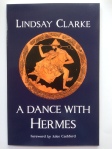
One of the things that raises Tessa Hadley’s work so far above its quiet and accurately observed domestic dwelling is the author’s profound understanding of the nature of loss.
The opening paragraph of David Lowenthal’s book about yesterday, The Past is a Foreign Country, is uncompromising in its assertion:
“The miracle of life is cruelly circumscribed by birth and death; of the immensity of time before and after our own lives we experience nothing. Past and future are alike inaccessible. But, though beyond physical reach, they are integral to our imaginations. Reminiscence and expectation suffuse every present moment.”
The direct dramatic opening of Hadley’s novel, The Past, defines a sense of place as well as time and the opening word nudges us to recall a girl from 1865 whom Lewis Carroll described as peering through a door into another world:
“Alice was the first to arrive, but she discovered as she stood at the front door that she had forgotten her key. The noise of their taxi receding, like an insect burrowing between the hills, was the only sound at first in the still afternoon, until their ears got used to other sounds: the jostling of water in the stream that ran at the bottom of the garden, a trickle of tiny movements in the hedgerows and grasses.”
Tessa Hadley is an intelligent reader of literature and there is an appropriate sense of ease with which she weaves Browning’s 1855 poem ‘Childe Roland to the Dark Tower Came’ into her narrative about a journey into the past:
“For mark! no sooner was I fairly found
Pledged to the plain, after a pace or two,
Than, pausing to throw backward a last view
O’er the safe road, ’t was gone; grey plain all round:
Nothing but plain to the horizon’s bound.
I might go on; nought else remained to do.”
Three sisters and a brother, aptly named Roland, have arrived at a childhood family home for a few weeks of immersion in a long-gone past and as we soon discover “They were in the country, in the middle of nowhere, with no way back…”. As Alice, having forgotten her key, stands gazing through the French windows “the interior seemed to be a vision of another world, its stillness pregnant with meaning, like a room seen in a mirror”. Later in the novel she talks to her brother about this moment of standing outside and explains that “Now I keep feeling as if I passed through the mirror and I’m living in there, on the other side”. The abandoned house to which the grandchildren return has a stillness which echoes that of the house in Virginia Woolf’s To the Lighthouse but “sunk further back into the earth” and “perched high above the steep end of a valley” is another cottage which has more association with Robert Westall’s The Scarecrows, Gibson’s ‘Flannan Isle’, Graham Swift’s Waterland or the witches house in the Grimm tale of lost children, Hansel and Gretel. Whereas the grandparents’ home is still inhabited by archives, family letters and books, the cottage smelled awful, “not innocently of leaf-rot and minerals like outside, but of something held furtively close, ripening in secret”.
Just as ‘the child is father to the man’ so the past re-emerges into the present and we tread upon the bones of the dead. This is of course not always recognised by children themselves and the nine-year old Ivy finds it impossible to believe “that she ended at the limits of her skin and couldn’t surpass it”. The past has a language which speaks like a shark’s fin cutting through water and one of the lessons learned throughout this powerful novel is that we do not simply stop at that enveloping bag of skin which holds us in. In a similar fashion the archivist is always searching through the old letters of the past in order to come to an increased awareness of the present and it is no mere accident that Tessa Hadley is both an ardent reader of Henry James and a writer of articles and a book about the great novelist. In a short piece about The Aspern Papers (‘The Cambridge Quarterly’, 1997) she refers to the “ignominies of literary discipledom” as the narrator is caught as “in the flare of a gaslight” opening a desk “in search of those wretched letters”. Hadley’s article concludes with an insight which, now twenty years on, has a prophetic ring to it:
“It might be possible to argue that a certain quality of shifting discomfort which characterises the narrative of The Aspern Papers represents an important development in James’s oeuvre: that in it he begins to interrogate with a new scrupulousness his own authority as ‘writer’, even perhaps the sources in his own ‘editorial heart’ (the phrase recalls those notebooks stuffed with lists of names, anecdotes, fragments of lives) of the need to write. And his including within his narrative what almost amounts to a perpetual critique of the very fictionalising process and its appropriations of ‘real life’ is highly suggestive for any analysis of his late style.”
Tessa Hadley will be talking about the dark art of fiction-writing at London Review of Books this Friday, 29th September, at 7.00 p.m.
Ian Brinton, 27th September 2017.



